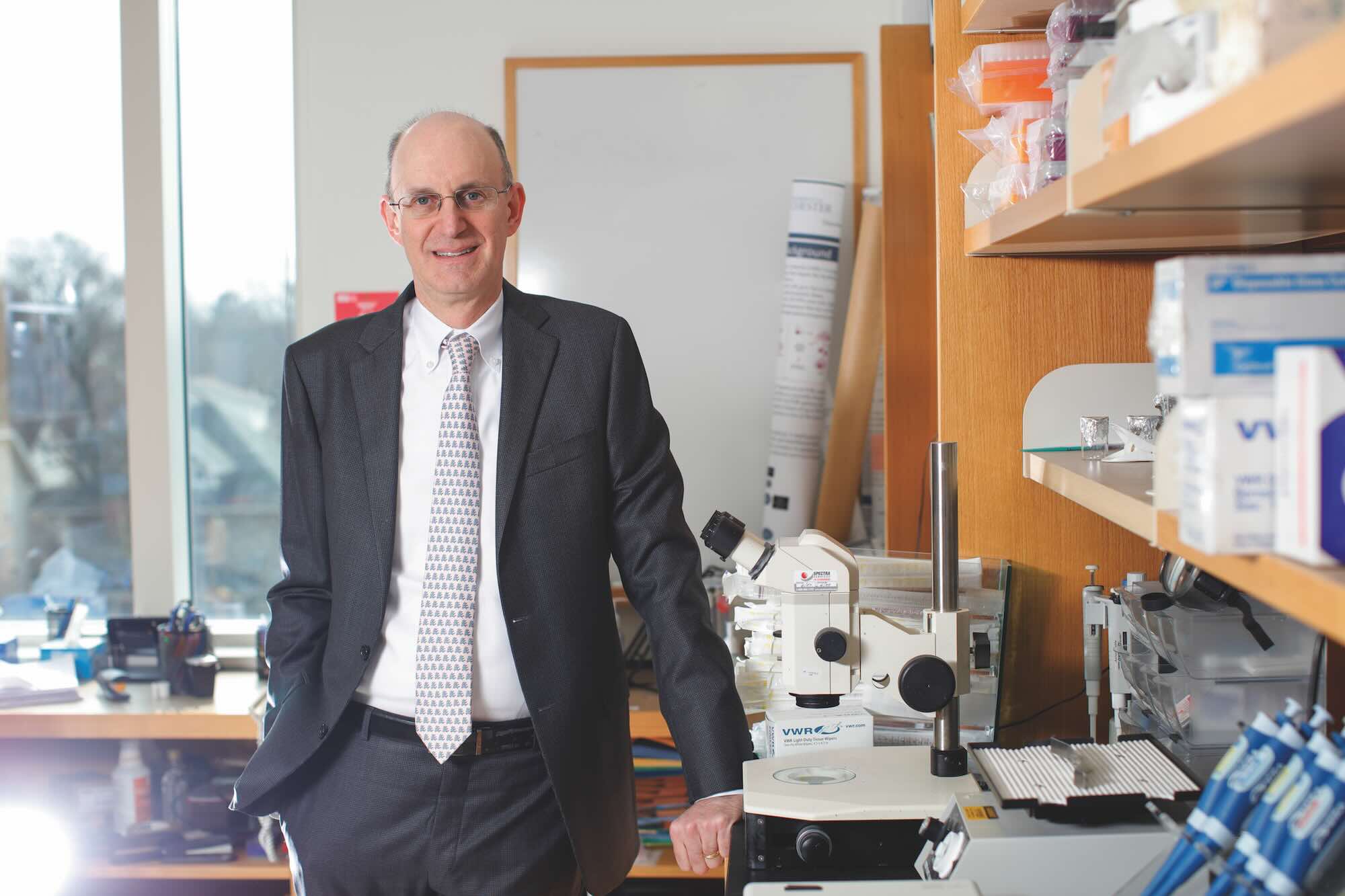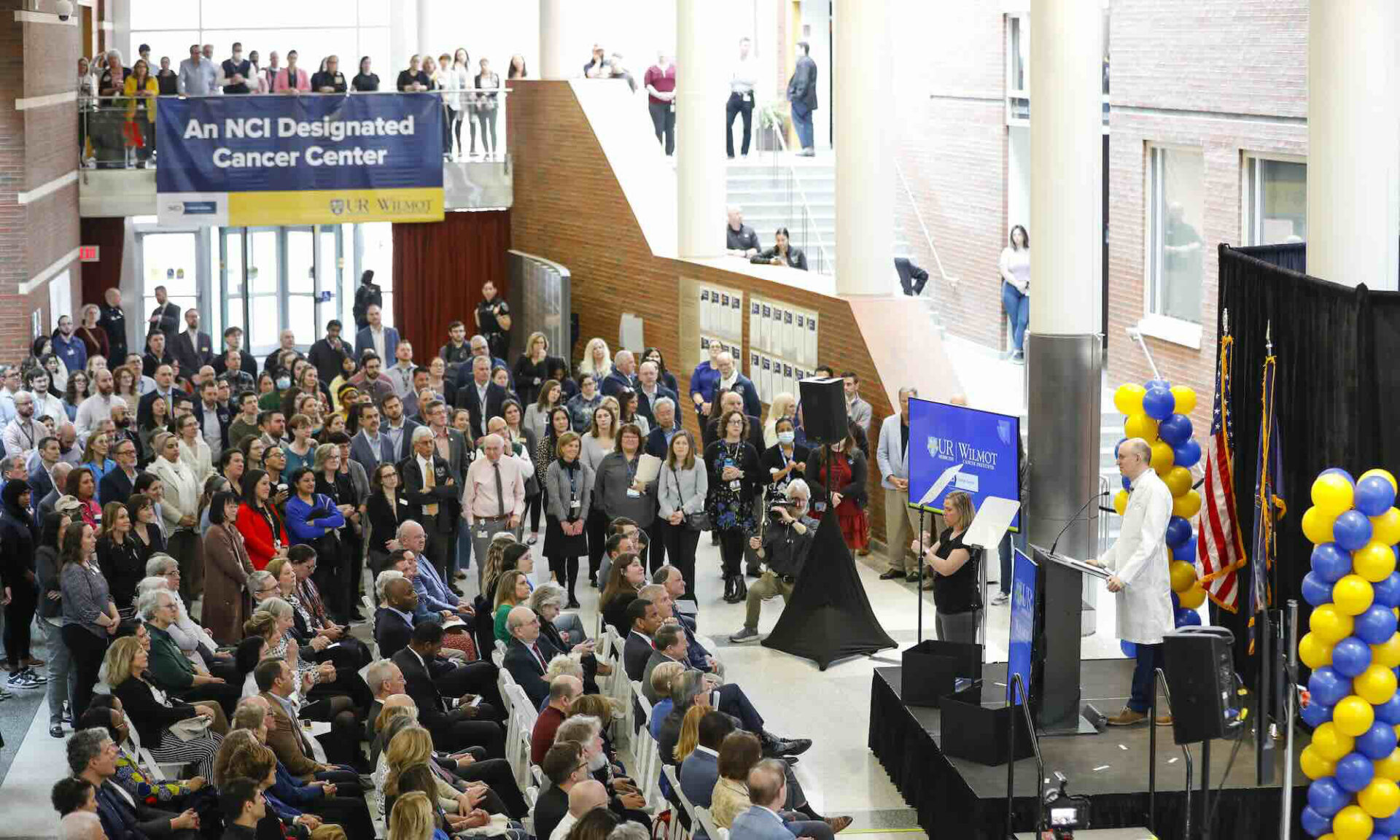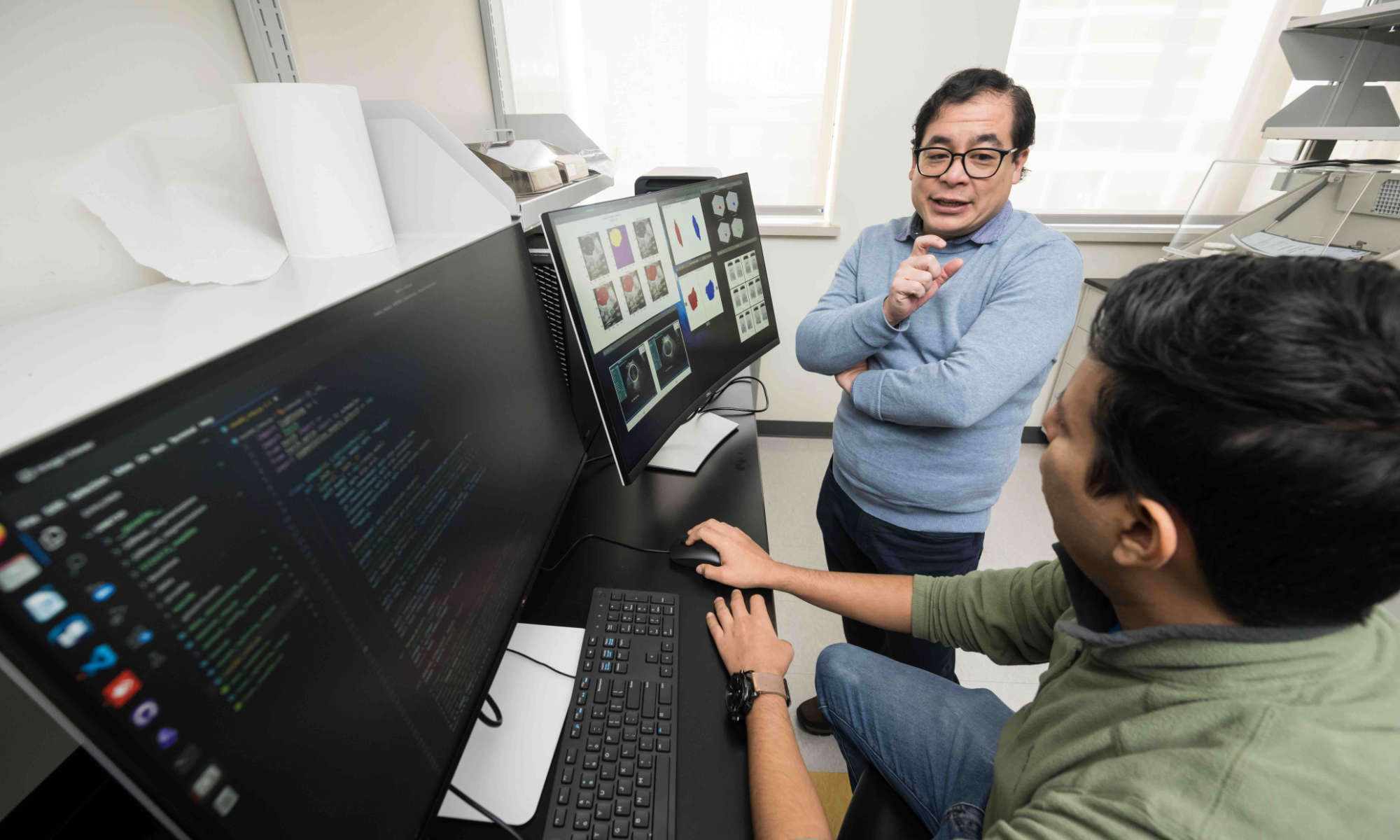“It’s an extraordinary moment in the history of the cancer center,” says Wilmot Cancer Institute director Jonathan Friedberg.
Of the estimated 1,500 cancer centers in the United States, the University of Rochester’s Wilmot Cancer Institute is now one of only 73 to have a special designation from the National Cancer Institute (NCI). The NCI recognition places Wilmot in the top 4 percent of cancer centers nationwide.
Admission to this exclusive club certifies that Wilmot is at the forefront of research, community engagement, education, training, and life-saving clinical care. The honor comes with a $10 million research grant (renewable after five years) and access to additional funding only available to NCI-designated centers.
The achievement was no surprise to President Sarah Mangelsdorf. “I happen to think our cancer center is stronger than some of the others who have had their NCI designation for quite a while,” she says. “Every metric shows we’re first-class: the number of clinical trials, the number of patients we serve, faculty we’ve hired, research grants—there is no doubt about the great work happening here.”

Everything that resulted in this coveted designation is the product of an effort that began in March 2016.
To meet the rigors of the NCI designation process, which are unmatched in medicine, Wilmot restructured its entire organization, developed a bold strategic plan, doubled its research funding, and adopted a workplace culture that emphasizes collaboration over individual performance. It also initiated new programs in education, training, and community outreach and went on a multiyear recruiting frenzy that brought in 30 oncology stars—many of whom were at NCI-designated centers—to lead basic and clinical research teams. These moves culminated in a demanding, monthslong evaluation process—including an on-site NCI visit—which scrutinized a 1,300-page application describing every aspect of the cancer center’s operations, leadership, strategy, and research programs.
“It’s an extraordinary moment in the history of the cancer center,” says Wilmot director Jonathan Friedberg, who led the efforts to achieve NCI designation. “We view this as major validation and a new beginning that unlocks progress in many areas. But we’re not sitting on our laurels.”

Wilmot will enjoy the clinical cachet that comes with an NCI designation, but the backbone of this distinction is the institute’s research. The reason is simple: Treatments depend on it.
Cancer care has become more complex, and it can take years for the most modern and sought-after treatments, such as immunotherapies, to reach cancer clinics across the country. But NCI centers are hardwired to be at the forefront—a fact that carries significant weight for western and central New York, where cancer rates are inordinately high.
If the 27-county region Wilmot serves were a state, it would have the second highest incidence of cancer in the United States, behind Kentucky. That doesn’t mean that living in this area puts a person at greater risk of cancer. Instead, the rates are indicative of an aging population, tobacco use, sedentary lifestyles (compared to state and national averages), and challenges to accessing health care in rural and urban areas, including poverty.

The University’s cancer center is the only one in the region equipped to study and reverse this disturbing trend. And, as an NCI-designated center, Wilmot is also better positioned to address complex patient needs. The reason? Research.
Wilmot is investing in an important initiative called Developmental Therapeutics (DT) to help turn scientific discoveries into treatments faster and more efficiently. Even among NCI-designated centers, DT is rare. Friedberg’s vision is for Wilmot to become a DT leader, making it an elite program among the most elite cancer centers. Efforts are underway to recruit someone to lead the program and fund specialized laboratories. Moving this function in-house will allow Wilmot scientists and fellow researchers across the University to more rapidly evaluate new cancer therapies. It would also involve recruiting experts with the training, experience, and distinct skills to design first-in-human clinical trials.
“When you invest in the scientific mission, there’s a massive halo effect that spills over to patient care,” Friedberg says. “It’s a thrilling place to be right now—for research and for patients.”
A version of this story appears in the spring 2025 issue of Rochester Review, the magazine of the University of Rochester.





